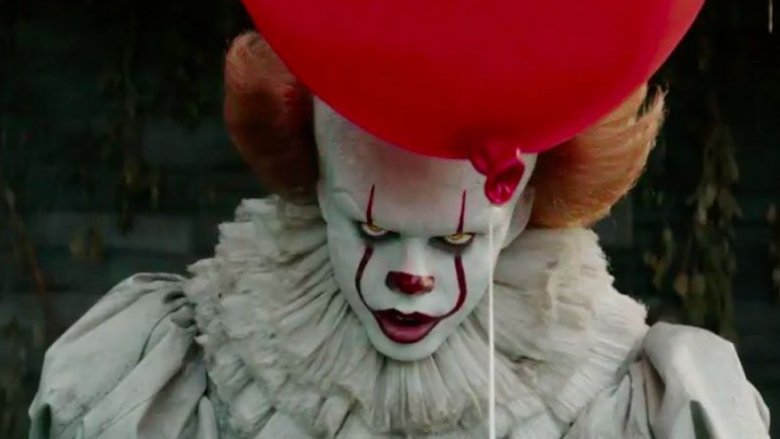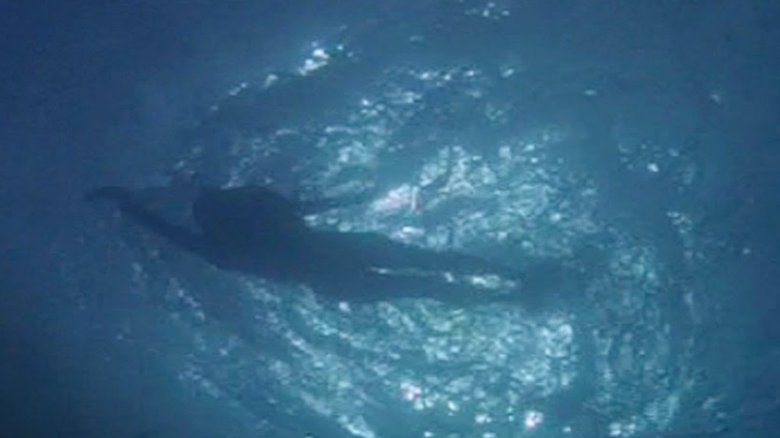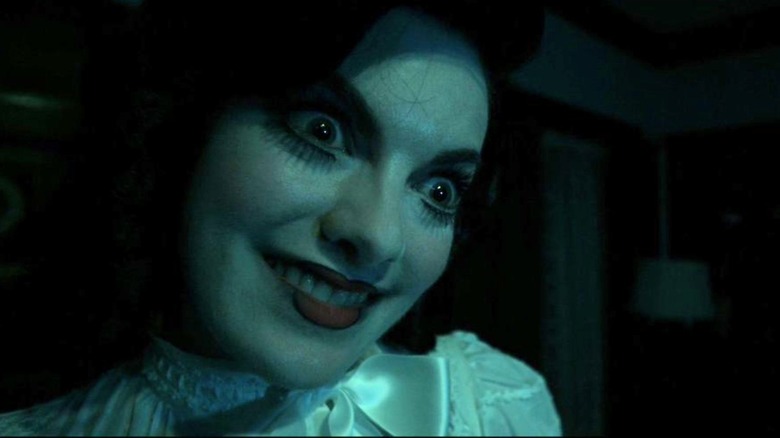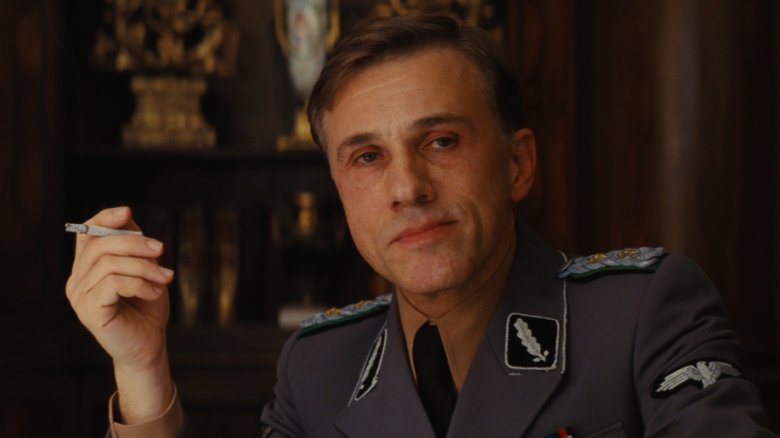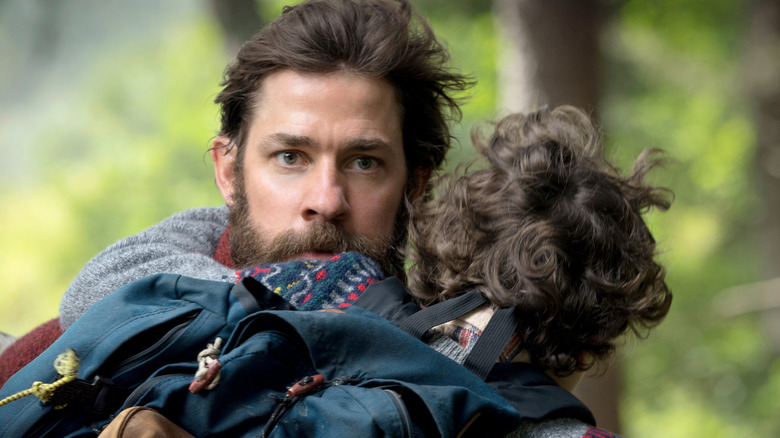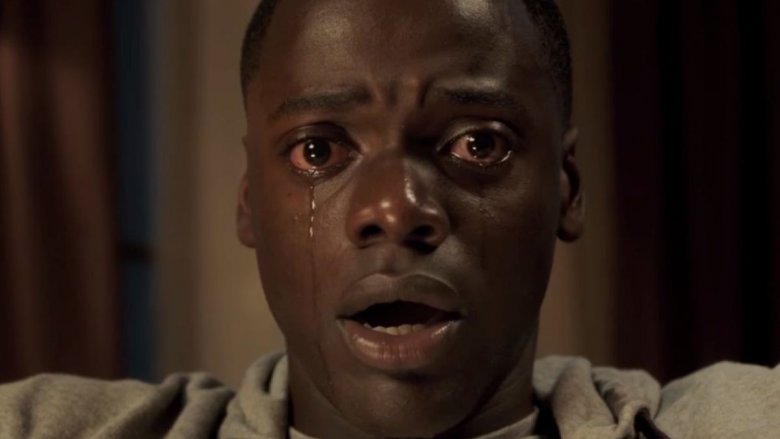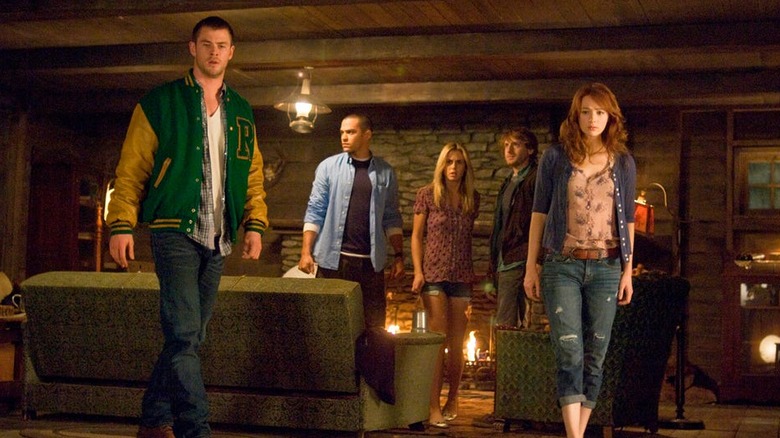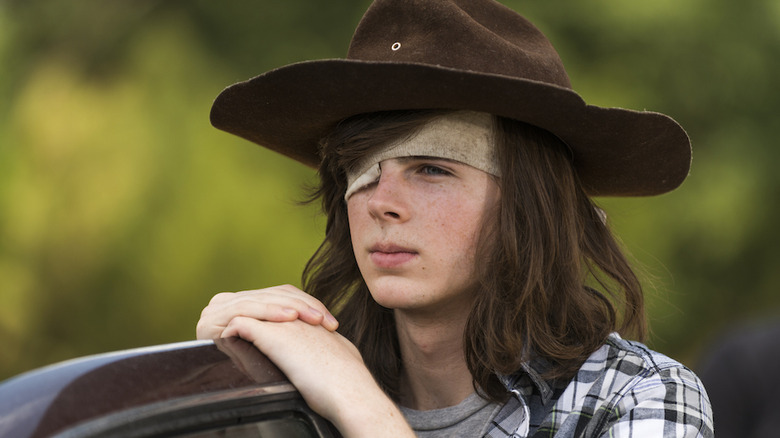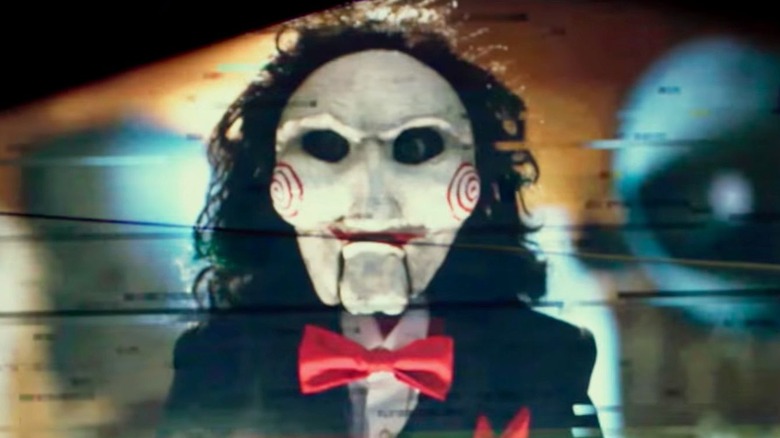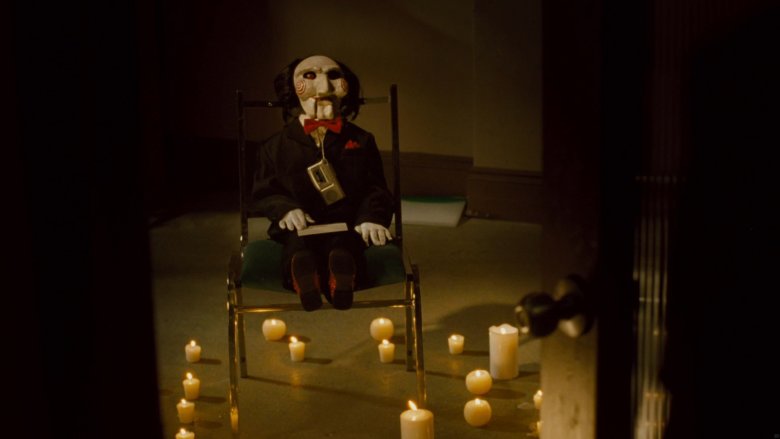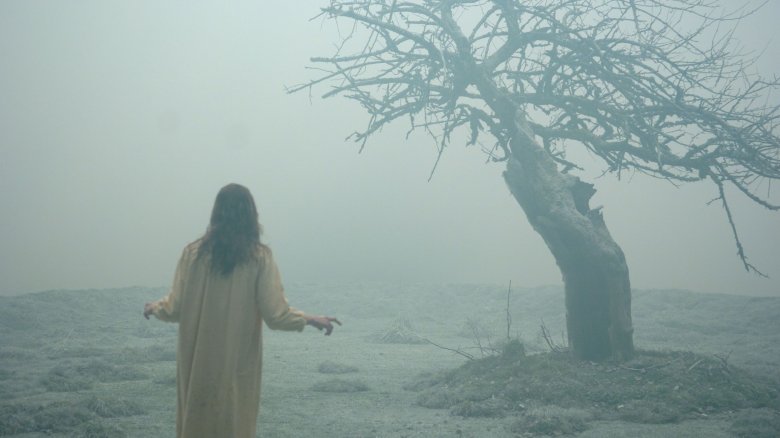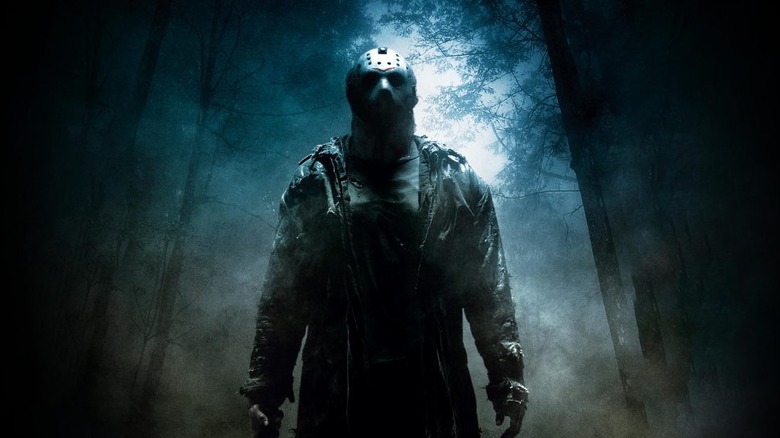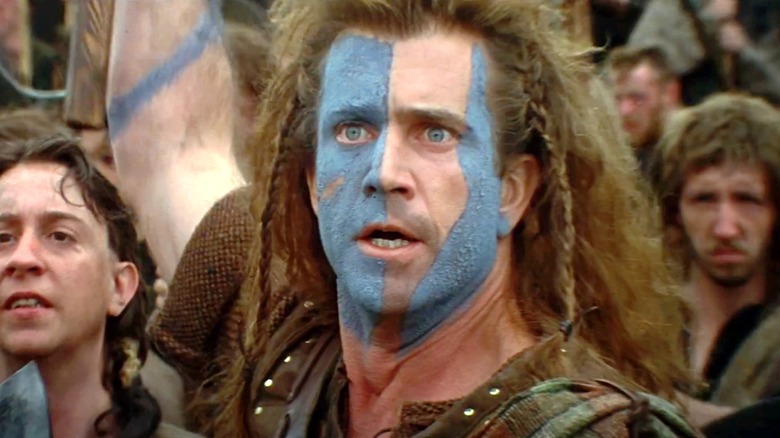Techniques Movies Use To Terrify You
Making movies is a complex art form. From drama to comedy, romance to horror, each genre has its methods and techniques used in order to create the masterpieces that we all know and love. Some of these techniques are more obvious, like good makeup and costumes or expertly-composed scores and well-written lines. Others are on the subtler end of things, like effective settings, striking cinematography, or inspired casting.
When it comes to creating the elements of fear and terror, in particular, there are several of these tools that stand out as common techniques used by movies across the board in order to do one thing: terrify you. Whether you're watching a tense scene in a drama like Braveheart (who can forget that ending?) or you're making your way through that endless string of horror classics that cycle through the cable carousel every October, many of the same tools are being used to keep you on the edge of your seat.
Music
One of the classic tools that filmmakers use to get your blood pumping is music. There's nothing quite like a well-composed score to help set the tone, get us cheering like ancient warriors, soothe us like swaddled babes, or—in this case—get our hearts racing in victimized anticipation. Music that has been subtly woven right into the very fiber of a film, so much so that you don't even notice it's there, can be the perfect terror-inducing complement to a tense sequence. It quietly sits in the background, complementing the fear and waiting for those perfect moments when it can help ramp things up to a terrifying crescendo.
And the truth is, it doesn't take a complex, multi-layered piece of musical magic for this technique to work. Take, for example, John Williams and his triumphant masterpiece, Jaws. Using just two notes (yes, there are more in there, but you know the two we're talking about), Williams managed to petrify audiences with one of the most memorable scores in movie history. It's an excellent example of how even the most simplistic music can be the perfect tool of terror for any film.
Sudden noises
Music isn't the only way movies scare you with audio. Let's talk about sudden noises. You know, the jump scare tactics that make us so frustrated as we sit in their wake with popcorn and soda freshly spilled all over our laps. And yet, after we finish cleaning ourselves off, we come back for more. Why? Because those sudden noises really do drive home the terror of a scary scene with appalling effectiveness.
It might be an antagonist suddenly striking from behind, or a creature jumping out of the darkness. Sometimes, filmmakers even diffuse a previously tense sequence with the sudden, unexpected arrival of a friendly face, accompanied with a sudden trick sound. At any rate, the insertion of an abrupt, silence-rending noise is a foolproof way to get the audience to jump right out of their skins. It may be a little bit of a cheap shot compared to the eloquence of a well-composed score, but a timely sudden noise is certainly a fearsome weapon in a director's terror toolkit.
Sound effects
Not all scary sounds try to frighten you with a startling blast. Those jump scare noises are typically achieved abrupt, loud stabs of the movie's score. Sound effects, on the other hand, are often subtler, the unsung heroes (or villains?) that get us on the edge of our seat without even knowing it, ready and waiting for the impending "sudden noise" to spring the trap.
A great example of this can be found in Quentin Tarantino's Inglorious Basterds, during the scene in which Colonel Hans Landa (Christopher Waltz) and Shosanna (Mélanie Laurent) have a tense conversation in a restaurant. The scene is largely from Shosanna's perspective, and the audience knows that she is terrified of the man sitting down at the table with her. By the end of the scene, you find your skin crawling even though it's sans music, abrupt noises, or really any of the other elements of horror on this list. The main thing it has going for it? Sound effects. Each and every motion, utensil, plate, and bite of food is painstakingly audible as Landa casually chats with his petrified companion, with the effects serving to tune the audience in to every single thing that is going on, leaving everyone ripe with fear and trepidation.
Silence
Eerie music, surprising noises, and subtle ambiance can combine to make a terrifying soundscape, but they're all made more effective by the occasional lack of any of them. The silent sequence is one of the oldest tricks in the book, and yet it continues to be one of the most effective. Consider, for example, the fact that the best jump scares are usually preceded by some level of comparative silence. And we're not talking about things "calming down" for a second—we're talking about utter, unnatural silence. It's the kind of surreal absence of sound where only certain, carefully chosen sounds break through, like a character's footsteps as they walk down a dim, dank tunnel or their heavy breathing as they search through the woods at night.
For example, The Walking Dead has used this tactic to great effect numerous times, with shuffling zombies somehow growing impossibly silent just moments before they show up inches from a victim's face. Sure, you can hear the incessantly gurgling antagonists from a mile off in most scenes, but that doesn't stop the directors from occasionally creating that unreal moment of stillness, signaling that a scare is just around the corner. Often the simple dearth of sound in a scene can be as good as an entire orchestra.
Close-ups
Withholding information is a key tactic of fear. That's why filmmakers will sometimes refuse to show the viewer what's going on by blocking everything out but the victim's face. Close-ups of actors' faces are a classic way to terrify. Of course, this puts extra pressure on the actors to emote believably, or you're just going to have everyone rolling out of their chair laughing rather than jumping out of their skins in fear. You also can't overuse it, or it can get really obnoxious. When well done, however, the close-up can be the perfect way to build suspense, and for more than one reason.
Not only does this give everyone an intimate view of the emotions at play—right there on the actor's big, beautiful, doomed face—but it leaves you feeling like your back is turned to the danger. When all you can see is the petrified grimace of the victim, you're left feeling exposed and terrified yourself, not knowing what exactly it is that's metaphorically "behind you" but all the while knowing something is there...something that you should be scared of.
The stupidity factor
This next one is a hallmark of the "cheap shot" kind of terror that makes up the bread and butter of so many classic horror flicks. Some teen hero makes a boneheaded decision to go see what that sound is or check out that gloomy basement...because good things always happen in dark corners, right? These characters always fall victim to the impending danger moments later. To the alert, genre-savvy viewer, this technique often falls flat on its face, as they can see things coming from a mile away.
But whenever a quality movie manages to suck you in far enough with other things (like the music or the acting) to feel genuinely invested in the fate of the protagonists, it's easy to ignore a laughably bad string of decision-making and watch in a state of suspended disbelief as you feel your gut flip over in dreaded anticipation. This sort of unrealistic unawareness, as hokey as it can be at times, most definitely has the potential to get us all worked up in a lather of terror when executed properly.
A false sense of security
This one is subtle, but it's an integral element of a well-paced horror film. A string of jump sequences can be pretty terrifying, but nonstop screams can be exhausting, canceling out the mood as the audience goes numb. The true art of the scare comes when the filmmakers manage to restrain themselves, saving that sudden noise or terrorizing music sequence for just the right moment. How do you do that? By allowing the viewer a brief rest in a safe space or taking the time to lull them into a false sense of security.
While it's easy to remember the scary moments, one of the most critical build-up factors to a well-executed terror sequence is providing a comforting, calming scene beforehand. This takes many shapes and forms, from romantic subplots to comedic interludes to emotionally vulnerable character beats. There's a whole host of ways that films manage to draw the viewers in, calming their nerves and relaxing them...right before the danger strikes.
Contraptions
You don't have to be a horror movie fan to fall victim to this technique. We've all seen horrifying contraptions on screen in one place or another that we just can't seem to get out of our heads. Even something as harmless as Star Wars has its moments. Who can't forget that unnerving Han Solo torture scene?
Perhaps the best example of contraptions in action, though, can be found right in the heart of the horror genre after all. The Saw franchise is rife with all sorts of terrorizing doohickeys and other apparatuses designed purely to make your heart skip a beat as you fear for each trapped victim. From bear traps to barbed wire, chains to needles, and an endless procession of other run-of-the-mill objects turned gruesome, the creators of Saw found every way possible to keep the audience petrified for a seemingly endless procession of movies. The longevity of the series only reinforces the success of the technique. Jigsaw recently revived the franchise (to the delight of fans, if not critics), proving that creepy contraptions can always be counted on to bring the fear.
The psychological stuff
While we're talking about Saw, let's get deep for a second. That may sound absurd, considering how shallow those movies seem—sure, the twists are fun, but really it's just about watching people die in horrible ways—but hear us out for a second. One of the truly terrifying elements of the Saw movies (and countless other flicks) is the element of psychological torture.
When you watch a human being slowly worn down until they are forced to do something that they would never in their right mind consider, it can burrow right into your memory in a way that doesn't just fade along with the credits. The unforgettable scene in the original Saw in which Dr. Lawrence Gordon (Cary Elwes) must saw his own foot off is proof that even nasty torture flicks can make us examine our own will to survive. Whatever the venue, the concept of psychological torture is one of those terror tools that just keeps giving.
The spiritual stuff
While some movies toy with your mind, others go straight for your soul. For centuries, people have explained away scary things as the actions of demons, monsters, goblins, imps, and other creatures of darkness. It's the whole reason why Lore became such a popular podcast and then got turned into a show by Amazon. These spiritual, often fanciful, elements have not just gone away in the scientific age either, and still find a welcome reception on the silver screen time and time again. From glowing red eyes to creepy bodily contortions, the actions of spiritual creatures are a classic technique to get your heart pounding.
Just look at how many movies have the word "exorcism" in the title. The thought of demons and monsters on the loose harassing humanity plays with something deeper and darker than we can understand, something that is out of our realm of experience. There are few things more unsettling to the human psyche than that which we don't understand and cannot control.
Gore
We had to talk about this eventually, right? Honestly, gore in and of itself isn't necessarily the key to terror. It can be effective, though, particularly when used in conjunction with the other elements on our list. Sound and music might build to a bloody revelation. The framing of a shot can keep a bit of body horror out of sight until just the right moment. Maybe a movie will get under your skin with the psychology of violence itself. And all of those Saw contraptions are only effective because we're waiting to see them fulfill their gruesome purpose.
But, at times, gore can be overused as well. For example, The Walking Dead has been famous for its gory zombies. But the truth is, there have been moments where they overplayed their hand. The seventh-season sequence in which Negan smashes Abraham and then Glenn's brains out over and over again is absolutely brutal, and one of the hardest things to watch in modern television. At times, some of the shots of flesh-rending zombies (who themselves are falling to pieces) just seem to drag on endlessly until they become more nauseating then terrifying. At the end of the day, gore is one of the classic terror tools at director's disposal, but it shouldn't be overused or it can end up becoming off-putting or inadvertently funny.
Imagination
Let's end this romp through the terror-ific world of scares with one of the most powerful yet challenging techniques in cinema: leaving horror to the imagination. We already saw how shows like The Walking Dead can sometimes oversell gore to the point where it isn't scary anymore. On the flip side, though, if you don't utilize at least some of these techniques, the scary stuff will pass right by without ever being noticed.
Capturing the imagination of an audience can be a very hard line to walk, but the true sign of a masterfully terrorizing flick is when you walk away with your skin crawling, but you don't remember seeing the thing that actually made you feel that way. After all, our own brains know how to scare us better than anything on a screen. That moment before the attack, that glimpse of a torture device waiting to be used, or the fearful testimony of a victim can be the most dreadfully terror-inducing moments of them all.
To bring things full circle, let's dissect (pun intended) that ending scene in Braveheart a little bit further. William Wallace (Mel Gibson) is literally being drawn and quartered, his guts getting torn out while he's still alive...but we never really see it. We see a close-up of Gibson's face, we hear sound effects and well-timed music, and we're left with our imagination to do the rest.
